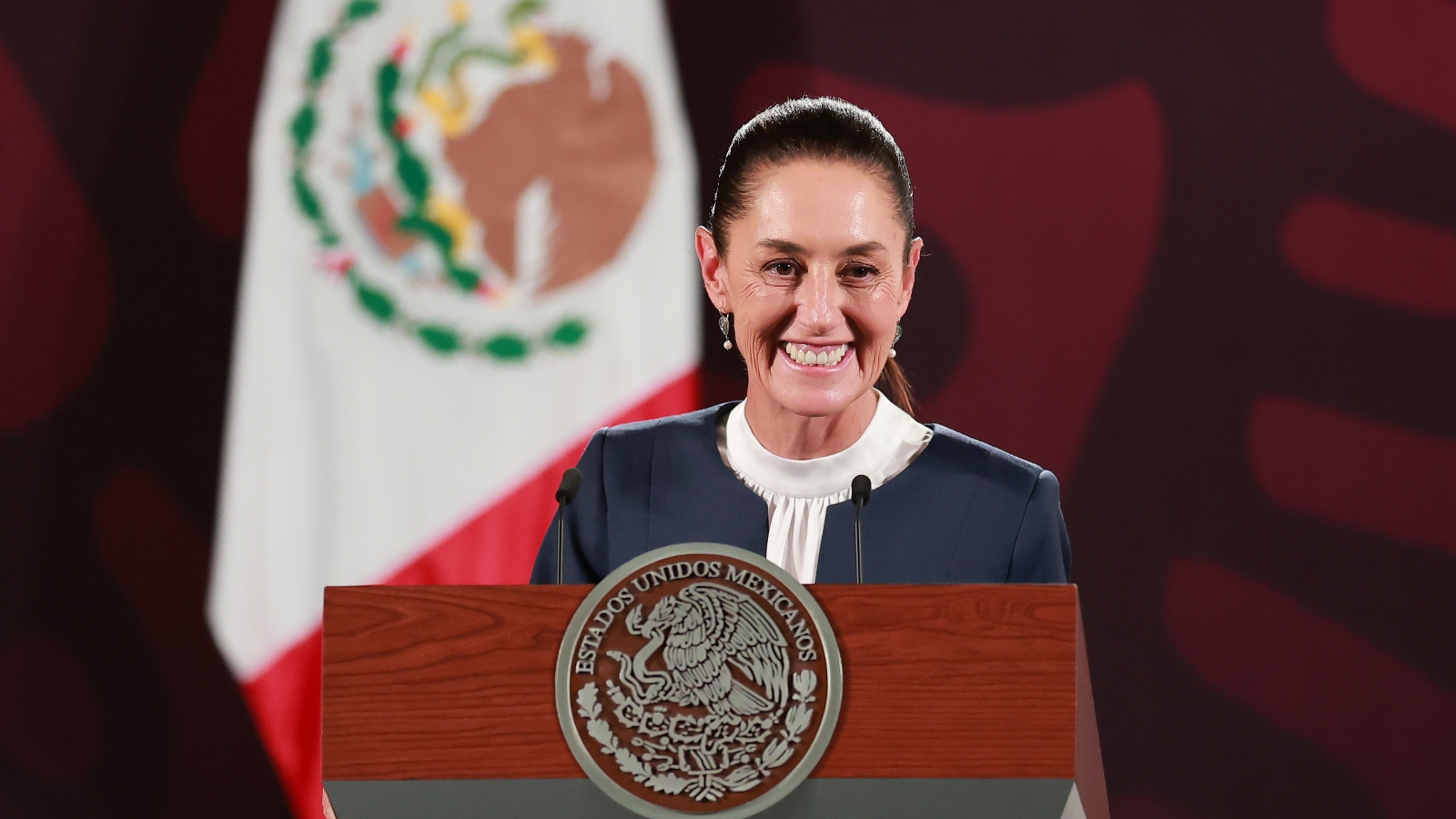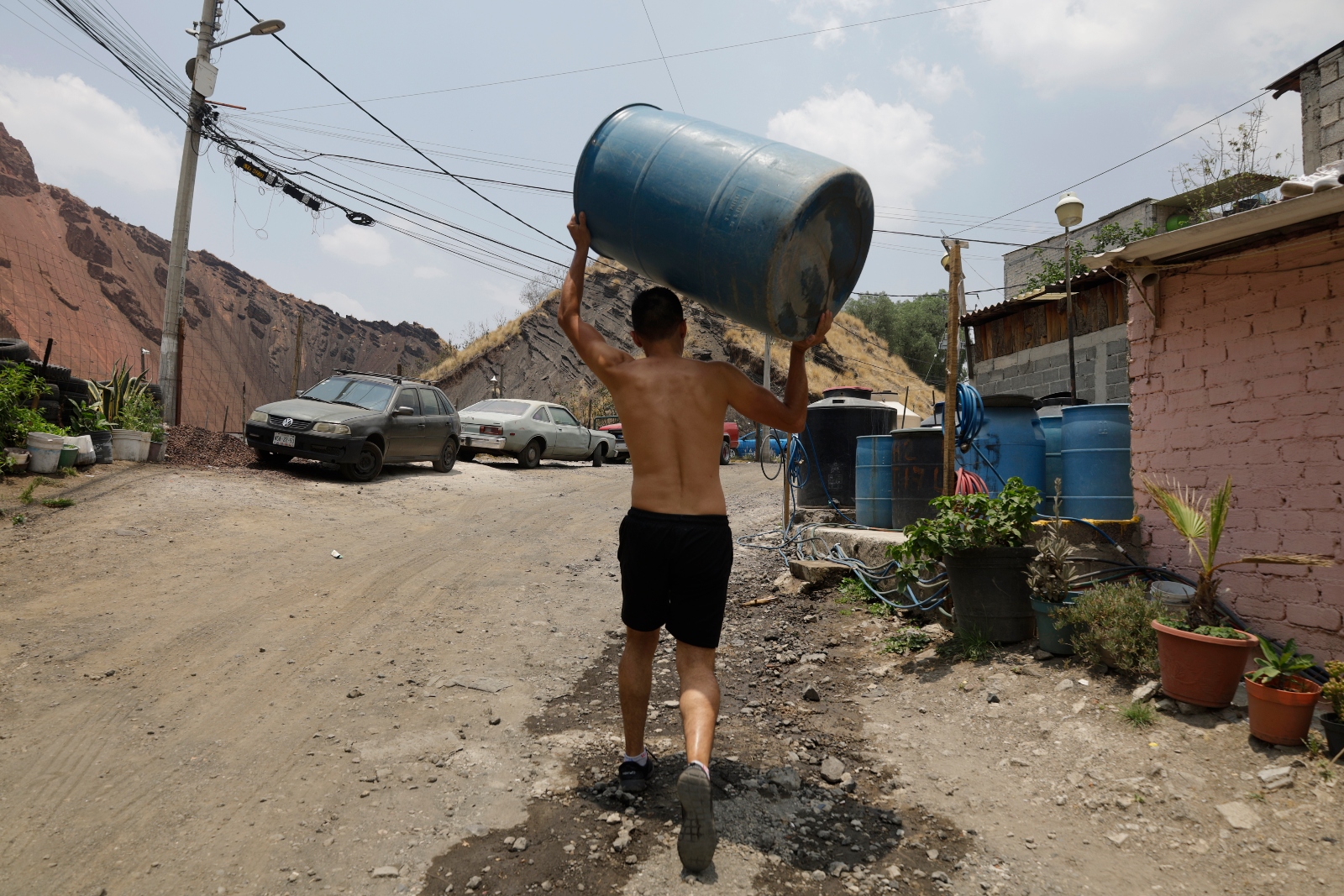
Claudia Sheinbaum won a landslide victory in last month’s Mexican presidential election, winning nearly 60 percent of the vote and securing legislative majorities for her leftist Morena party. a former climate scientist and mayor of Mexico City, Sheinbaum dominated the polls after emerging as the successor to the popular outgoing president, Andrés Manuel López Obrador.
Even as Sheinbaum prepares to take office, the city she ran from 2018 to 2023 is making global headlines as it grapples with a historic water crisis. Millions of low-income residents across the city rely on intermittent deliveries of contaminated groundwater, and even wealthier neighborhoods have seen their faucets turned off as the city’s main reservoirs dry up. Not only that, but the city is losing about 40 percent of its water supply due to leaks in its underground pipes.
Sheinbaum sought to tackle these problems as mayor, pursuing projects to capture rainwater, restore depleted aquifers, and replace and upgrade outdated pipes. But water experts and public officials who worked with Sheinbaum say she lacked the resources to reverse a crisis decades in the making. The new power she will have as president, plus a wave of new leadership in Mexico City’s local and regional governments, could usher in a sweeping change in how one of the world’s most populous countries manages its water and adapts to climate-driven drought.
“Water is her biggest concern,” said Armando Alonso Beltrán, the head of the water department for the state government in the Mexico City region and a friend of Sheinbaum’s. “It’s in her top priorities, and it always has been.”
Enrique Lomnitz, an engineer whose company, Isla Urbana, has built rainfall-harvesting systems across the city, agreed that Sheinbaum has made significant progress as mayor, but said the city still has a long way to go.
“She has a very good record, and she has initiated many paradigm-shifting programs that have opened up new possibilities for approaching the water crisis,” he told Grist. “But these are still very small things compared to the scale of the problem.”
That’s because Mexico’s water crisis is actually several different crises. The shortage that made global headlines this spring was caused by an extreme drought caused by the El Niño climate phenomenon. When spring rains failed to arrive, several important reservoirs supplying water to the city emptied, forcing city officials to implement rotating water shutoffs in the wealthy neighborhoods lucky enough to have consistent running water.
But these reservoirs supply only about 30 percent of Mexico City’s water, most of which goes to the wealthier downtown neighborhoods. The rest of the metropolis draws water from underground aquifers that have been declining for decades, so much so that parts of the city sank with several feet. The water that does still come from these aquifers is often contaminated with toxic chemicals.

The problem isn’t that there isn’t enough water to recharge these aquifers over time: Mexico City gets about 34 inches of rainfall a year, similar to Midwest states like Iowa. But the city has grown by millions of people in recent decades without investing in infrastructure to catch and distribute all that water. The critical forest that recharges the aquifer, known as the “Bosque del Agua” or “water forest,” has diminished over the past century due to logging and development. Meanwhile, the water authority has failed to maintain the residential water system, resulting in a staggering amount of water being lost to leaks – more than 40 percent of the total water supply, one of the highest rates in the world.
Sheinbaum faced all these problems as mayor of Mexico City. In 2019, less than a year into her tenure, she announced a major effort to control these leaks, and dozens of “leak response brigades” which will detect and plug holes in the water grid. It’s hard to gauge how successful she’s been, Lomnitz said, because fixing a leak in one part of the system can increase water pressure in another part of the system, causing more leaks. And as the city sinks thanks to aquifer subsidence, more leaks appear.
“There’s like a Whac-a-Mole thing happening,” Lomnitz said. “You fix the leaks here and they increase there.” Despite Sheinbaum’s investment, the city is likely billions of dollars away from meaningful water savings through leak reduction.
“There were mixed results, mostly positive, from her time as mayor,” Alonso said. “But it is difficult to say the final results, because the drought came last year and there was less water.”
Making the city “spongy” enough to catch and store falling rain is even more difficult given Mexico City’s unique history. The city sits on a former lake bed that early Spanish colonists drained in the seventeenth century, and as a result is prone to frequent flooding. The city’s leaders have spent the equivalent of billions of dollars over the past hundred years to build tunnels that can drain this floodwater away of the metropolis, including a massive 38-mile tunnel project which opened in 2019.
“Our issue has always been how to get water out of the city, and since we had this very rich aquifer and this amount of rain that is quite good, we never had this problem of scarcity,” said Loreta Castro Reguera, ‘ an architect who worked on a number of water projects in Mexico City. The city also has a problem of “technological inertia” as it seeks to capture and harvest rainwater, Castro Reguera added: It uses the same tunnel system to flush out stormwater and sewage, making it nearly impossible to collect rainwater for residential use. treat and redirect use. .
Since building a parallel pipe system for stormwater would be almost unimaginably expensive, the city’s best option is to start small and collect rainwater at the household or neighborhood level. Sheinbaum began doing this as mayor through a number of innovative nature-based projects. For example, the city turned a former landfill near the city’s largest wastewater treatment plant into a restored wetland that filters and treats captured stormwater, yielding a new, high-quality water supply. She also worked with Lomnitz’s Isla Urbana to install thousands of domestic collection systems and boosted the budget for infrastructure repairs.
Another model comes from Sheinbaum’s incoming successor as Mexico City mayor, fellow Morena member Clara Brugada, who has her own record tackling water issues. Brugada, who takes office later this year, has served for nearly a decade as the mayor of Iztapalapa, a large impoverished neighborhood in the eastern part of the city. Iztapalapa has struggled with crime and water shortages for decades, but Brugada has taken great steps to replace faulty infrastructure and created several community spaces known as “utopias” that combine green space with free public services and recreational areas.
One of the banner projects in the city was La Quebradora, a “hydraulic park” designed by Castro Reguera’s firm with support from the local government. The park captures stormwater to reduce flooding in nearby areas and funnels that drain into the aquifer recharge groundwater and alleviate the local water shortage.
“The impulse must come from the government,” Castro Reguera said, describing the need for more projects like the one in Iztapalapa. “This could be a chance to put more of these projects in place.”

However, Sheinbaum will have to worry about water issues in areas far from Mexico City, because the country’s northern states face a very different water problem than the capital. In these states, which are much drier than the region around Mexico City, the problem is less poor management than lack of supply. The vast majority of water in these areas goes to irrigate crops such as avocados and alfalfa, and another share supplies numerous mining operations, leaving very little residue for residential use.
Sheinbaum and her predecessor López Obrador tried to tackle this problem by curbing so-called water concessions, which give farms and mines the exclusive right to tap rivers and aquifers. Before the election, López Obrador pushed a constitutional amendment that would have allowed the government to cut off water to mines during a drought, and Sheinbaum signaled she would support that measure as well. She did too reportedly called for an overhaul of the national water law that would limit water use by farms, although this effort is likely to face opposition from powerful agricultural interests. (Neither the president’s office nor the campaign offices of Sheinbaum and Brugada responded to Grist’s interview requests.)
In these northern states as well as in Mexico City, the water crisis is as much a problem of management as it is one of physical shortage. The country’s national water authority faced accusations of bribery and corruption for years, and the local government in Mexico City has also faced criticism for a lack of transparency about water quality. These are the same utilities that Lomnitz says have underinvested in infrastructure for decades.
But the conditions are ripe for an investment boom. Sheinbaum holds the presidency, which will give her access to a much larger budget to invest in water storage and treatment projects. Brugada pledged to continue her focus on rainwater harvesting and environmental justice as the mayor of Mexico City. The new head of Mexico City’s regional government is also a member of the Morena party, and which means that all levels of government are aligned for the first time in decades.
Victor Magaña Rueda, an environmental scientist at the National Autonomous University of Mexico who has studied climate impacts in Mexico City, told Grist he believes Sheinbaum has the political will to reverse the trend of disinvestment and delay.
“She has a very deep knowledge of what the water crisis is in Mexico,” Magaña said. “She is now more interested in environmental problems than our president. But the most important thing is that she knows that we cannot continue in a situation like we have been living in for the past few years.”






